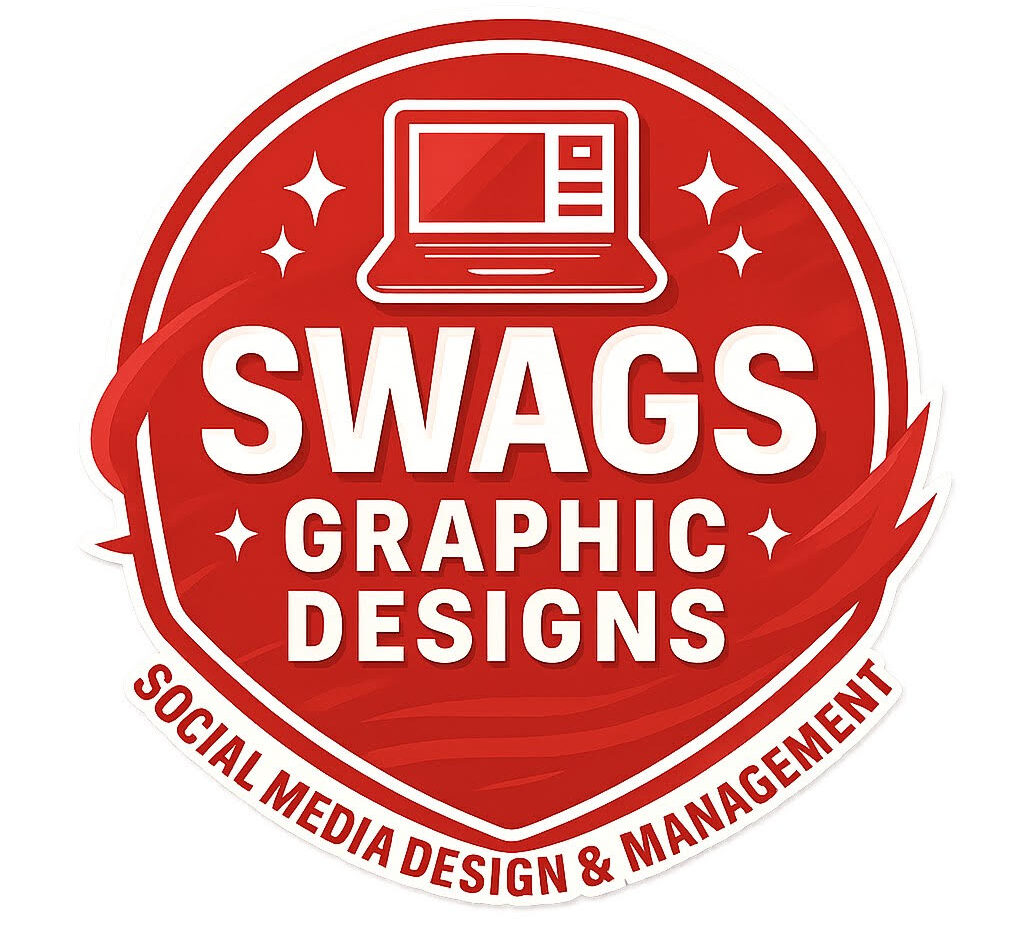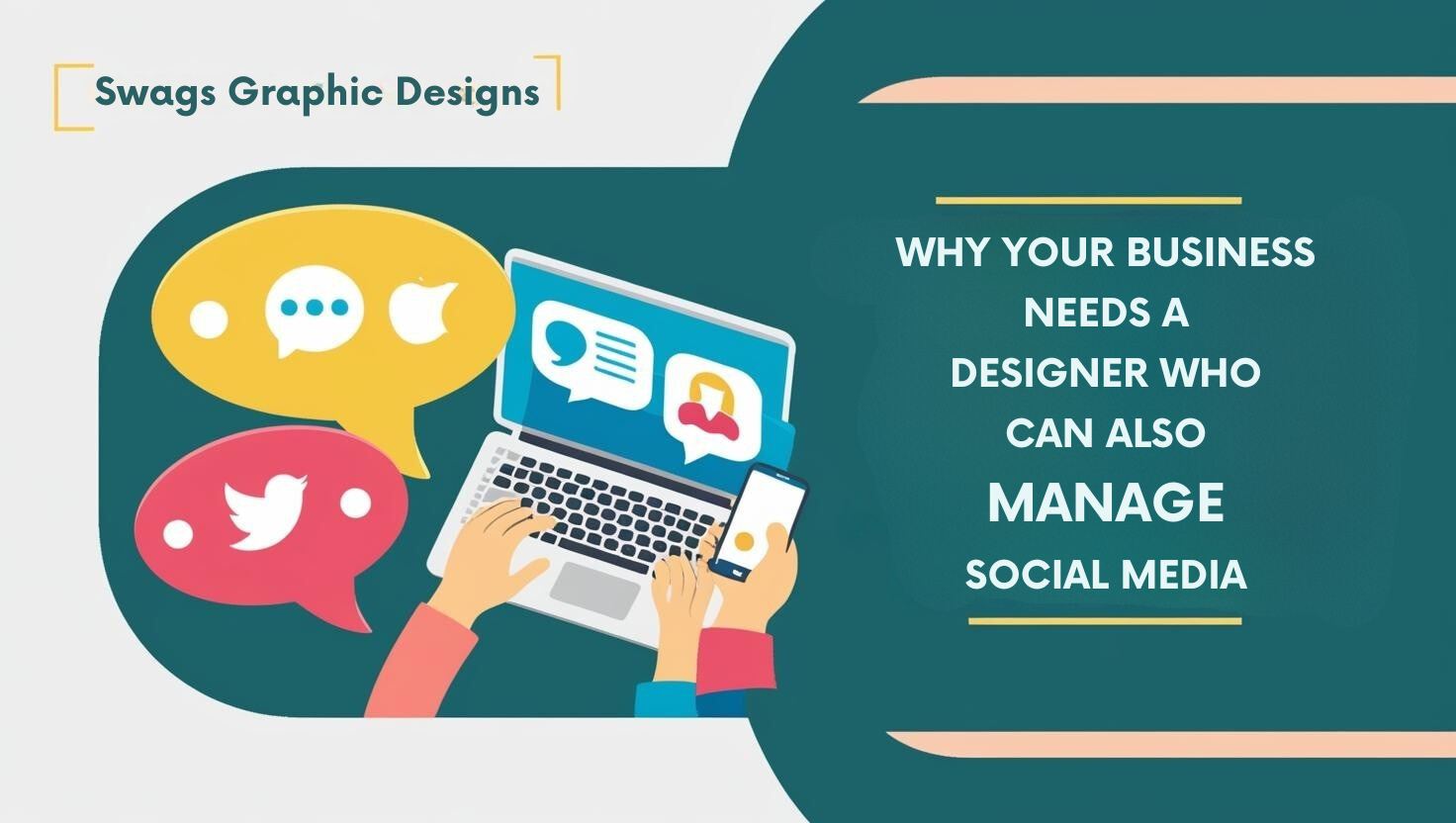Design and social media might seem like two separate fields, but when combined in one , the advantages are remarkable. In today’s digital age, a business can stand out by hiring someone who not only creates impactful visuals but also manages social media strategy. Instead of coordinating between a graphic designer and a social media manager, one expert can ensure a unified message. This article explains why your business needs a designer who also handles social media and how this dual role offers benefits you can really appreciate.
The Dual Role: Design and Social Media in One
At first glance, design and social media might appear to belong to different worlds. In reality, both rely on a good understanding of your brand. When one person combines these roles, the result is a cohesive outreach strategy that speaks clearly to your audience. A designer who manages social media knows exactly how to make your visuals work in sync with your messaging. This synergy is especially important when every post and image counts.
Having a single person focus on both creative visual design and strategic content management means your business isn’t spread thin by conflicting messages. This person has a clear vision of your brand’s tone and identity. Anything from the color scheme used on social platforms to the style of imagery in posts becomes consistent, making it easier for customers to recognize your brand.
Benefits of a Dual-Skilled individual
The benefits of hiring someone with expertise in both design and social media strategy extend across many aspects of your business. For one, having a unified voice means the brand identity stays true no matter where your audience encounters you. Consistent branding across posts, graphics, and campaigns builds trust over time.
Another advantage is improved efficiency. With one individual handling both roles, your communications are more streamlined and on-message. You will likely see faster decision-making when creative design and content strategy are managed under one roof. Changes in market trends or customer feedback can be applied rapidly because there’s no need to coordinate between different departments.
Moreover, this approach cuts costs compared to hiring two separate individuals. Many small to mid-sized businesses find it hard to justify having a full-time team for branding and social media when budgets are tight. A dual-skilled individual not only fills both roles but also offers flexibility in adapting to evolving business needs.
Getting Started: What to Look for in a Designer/Social Media Manager
Finding the right professional who can bridge design and social media isn’t as hard as it seems. There are several traits you might consider during the hiring process. First, look at a candidate’s portfolio. It should feature strong examples of both creative visual design and engaging social media content. This helps ensure that the individual understands how to craft a brand story through images and strategic posts.
Experience is another very important factor. Seek out someone who has worked on integrated projects before. When a designer is also involved in social media, they’re aware of the trends, algorithms, and audience behaviors that drive engagement. This background can lead to innovative strategies, from selecting the right imagery to scheduling posts for maximum reach.
Soft skills such as communication and adaptability are also key. The person in this dual role must be comfortable with rapid changes in social media trends while still maintaining a strong design aesthetic. A naturally curious attitude and willingness to test new ideas can result in a dynamic digital presence that grows with your business.
- Portfolio Strength: Look for a blend of design creativity and effective social media campaigns in their work samples.
- Integrated Experience: An ideal candidate has handled projects that require both design flair and content strategy.
- Adaptability: The ability to adjust quickly to trends and audience responses ensures the brand remains relevant.
Combining Visuals and Strategy: How It Boosts Your Business
When your visual side and strategic messaging come from the same mind, the advantages go beyond aesthetics. A designer who handles social media can create images that aren’t just pretty—they serve a purpose. Each post can be optimized for engagement and conversion, with visuals that highlight key messages and offers uniquely tailored to your target audience.
This approach also ensures that every visual element reflects an overarching strategy. For instance, the color palette, typography, and style are seamlessly integrated, regardless of whether someone views your website, social media profiles, or digital ads. This unified look creates a memorable brand experience that resonates with consumers.
Furthermore, combining these roles gives a boost to quicker responses to real-time events and market trends. Rather than having to wait for input from multiple parties, a single expert can update graphics or alter campaign strategies almost instantaneously. This immediacy can be a huge asset when it comes to capitalizing on trending topics or seasonal events.
Advanced Tips and Strategies
Once the basics of managing design and social media are in place, there are advanced strategies to deepen the impact of this dual approach. These tips not only step up visual appeal but also boost engagement with your audience.
Using Data to Make the Most of Creative Decisions: By drawing on insights and engagement metrics, the professional can refine designs to better attract and retain followers. Analyzing which visuals perform best provides a roadmap for future content that gets real results.
Storytelling through Visuals: Every design can contribute to a broader brand narrative. This means planning content calendars that build a story over time. Each post becomes a chapter that connects smoothly with the next. This technique fosters a deeper connection with your audience as they begin to anticipate and follow the evolving narrative.
Dynamic Content Creation: It’s important to mix static images, infographics, and short videos. Each type offers unique benefits. A static image gives a clear message fast, while a short video or an animated graphic can offer a richer explanation of a service or product. Such variety keeps your audience curious and engaged.
Streamlining these advanced tips into your business strategy will optimize both visuals and communications. Whether it’s refining posts based on data or creating a series of graphics that form a cohesive narrative, these advanced strategies lead to measurable improvements in engagement and growth.
The Basics: What Should You Expect?
When hiring someone who can design as well as manage social media, it is important to identify core service areas that matter most for your business. A solid foundation in quality design is a must. This includes skills in layout, color theory, and typography, ensuring the graphics are not only attractive but also match up with your brand ethos.
Alongside sufficient design expertise, the candidate must have a good handle on social media management skills. These include understanding platform-specific guidelines, ideal post timings, and engagement strategies that drive interaction and conversions. The merger of art and strategy ensures that visuals work seamlessly to support content and engage viewers.
- Visual Consistency: Expect integrated design standards across every platform. The professional should maintain visual tones that resonate with your core brand identity.
- Content Strategy: Look for proficiency in creating engaging captions, choosing hashtags wisely, and using platform-specific algorithms to your benefit.
- Analytical Insight: The professional should regularly monitor engagement statistics and adjust approaches based on what works best with your audience.
This balanced skill set helps you avoid the pitfalls of working with separate specialists, ensuring that every visual asset is designed with your broader marketing goals in mind.
Real-World Examples and Case Studies
Many businesses have experienced tremendous success by choosing a dual-skilled professional. For example, a local boutique once hired a designer who also managed their social media channels. Not only did the boutique see a consistent visual style across their online presence, but they also experienced a significant increase in engagement. Posts that combined creative imagery with timely promotions led to higher foot traffic in their stores and stronger online sales. This real-world example shows that combining these roles is not simply a convenience; it can provide measurable improvements for your business.
Another case study involves a tech startup that was looking to build a strong digital identity on modest resources. By hiring one expert with abilities in both fields, they were able to streamline their branding efforts. The chosen professional created eye-catching designs and managed daily interactions on social media, which resulted in a more vibrant digital community. The startup reported that the unified approach not only saved them time and money, but also built customer trust and brand loyalty over time.
These examples serve as a reminder that the benefits of a dual-skilled professional are both practical and measurable. Business owners can look to these case studies as inspiration while weighing the decision to consolidate roles into one dynamic position.
Conclusion
Your business thrives when every detail echoes your brand’s identity. Hiring a designer who is also skilled in managing social media not only ensures beautiful visuals but also a coordinated strategy that drives engagement. Combining these roles instills consistency, cuts costs, speeds up response times to market changes, and reinforces your brand story.
This integrated approach works particularly well when your industry relies heavily on visual communication and fast-paced digital trends. The expert will quickly adjust designs based on metrics, update content in real time, and keep your brand looking sharp every day. For businesses looking to stand out in competitive digital markets, performance and cohesion go hand in hand.
In a world where every post counts, the blend of artistic design and strategic media management delivers meaningful advantages. With consistent visuals, clear messaging, and real-time responsiveness, your company stands a better chance of engaging audiences and fostering lasting trust. If you’re ready to see measurable improvements in how customers perceive your brand, now is the time to consider a dual-skilled professional who can handle both design and social media.
Beyond the immediate benefits, investing in a professional who is adept in both fields prepares your business for future challenges. As digital trends continue to evolve and competition intensifies, having one person orchestrate your visual and social strategies can be a game changer. Over time, each design tweak and every strategically crafted post builds an authentic narrative that captures attention and nurtures customer loyalty.
This expanded approach adds versatility and resilience to your overall strategy, ensuring that your brand not only responds to but also anticipates market shifts. By choosing the right individual, you are setting your business up for a sustained glow-up in its digital presence. The combined skill set becomes an all-in-one solution that caters to both immediate needs and long-term growth, making your investment one that pays dividends over time.
Wrapping up, businesses that integrate design with social media management find themselves better equipped to navigate the dynamic digital landscape. The dual-skilled professional is a valuable asset in today’s market, where a consistent and engaging brand presence is very important. With the right talent, your business can truly flourish and build a loyal community that resonates with every creative effort and strategic post.

